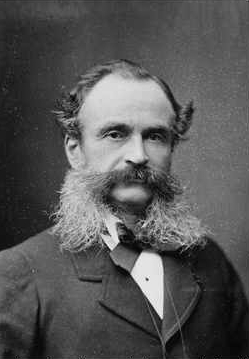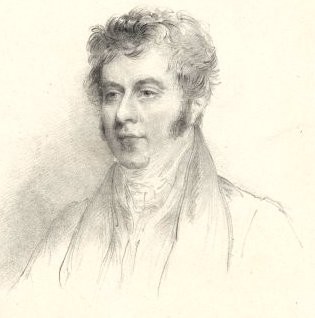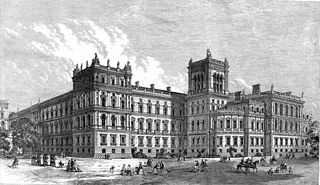Related Research Articles
Responsible government is a conception of a system of government that embodies the principle of parliamentary accountability, the foundation of the Westminster system of parliamentary democracy. Governments in Westminster democracies are responsible to parliament rather than to the monarch, or, in a colonial context, to the imperial government, and in a republican context, to the president, either in full or in part. If the parliament is bicameral, then the government is responsible first to the parliament's lower house, which is more representative than the upper house, as it usually has more members and they are always directly elected.
A land grant is a gift of real estate—land or its use privileges—made by a government or other authority as an incentive, means of enabling works, or as a reward for services to an individual, especially in return for military service. Grants of land are also awarded to individuals and companies as incentives to develop unused land in relatively unpopulated countries; the process of awarding land grants are not limited to the countries named below. The United States historically gave out numerous land grants as Homesteads to individuals desiring to prove a farm. The American Industrial Revolution was guided by many supportive acts of legislatures promoting commerce or transportation infrastructure development by private companies, such as the Cumberland Road turnpike, the Lehigh Canal, the Schuylkill Canal and the many railroads that tied the young United States together.

William Redfern was an English-raised surgeon in early colonial Australia who was transported to New South Wales as a convict for his role in the mutiny on the Nore. He is widely regarded as the "father of Australian medicine".

Lieutenant General Sir William Francis Drummond Jervois was a British military engineer and diplomat. After joining the British Army in 1839, he saw service, as a second captain, in South Africa. In 1858, as a major, he was appointed Secretary of a Royal Commission set up to examine the state and efficiency of British land-based fortifications against naval attack; and this led to further work in Canada and South Australia. From 1875 to 1888 he was, consecutively, Governor of the Straits Settlements, Governor of South Australia and Governor of New Zealand.

Sir Robert Richard Torrens,, also known as Robert Richard Chute Torrens, was an Irish-born parliamentarian, writer, and land reformer. After a move to London in 1836, he became prominent in the early years of the Colony of South Australia, emigrating after being appointed to a civil service position there in 1840. He was Colonial Treasurer and Registrar-General from 1852 to 1857 and then the third Premier of South Australia for a single month in September 1857.

The territorial evolution of the British Empire is considered to have begun with the foundation of the English colonial empire in the late 16th century. Since then, many territories around the world have been under the control of the United Kingdom or its predecessor states. When the Kingdom of Great Britain was formed in 1707 by the union of the Kingdoms of Scotland and England, the latter country's colonial possessions passed to the new state. Similarly, when Great Britain was united with the Kingdom of Ireland in 1801 to form the United Kingdom, control over its colonial possessions passed to the latter state. Collectively, these territories are referred to as the British Empire. When much of Ireland gained independence in 1922 as the Irish Free State, the other territories of the empire remained under the control of the United Kingdom.
The history of Australia from 1788 to 1850 covers the early British colonial period of Australia's history. This started with the arrival in 1788 of the First Fleet of British ships at Port Jackson on the lands of the Eora, and the establishment of the penal colony of New South Wales as part of the British Empire. It further covers the European scientific exploration of the continent and the establishment of the other Australian colonies that make up the modern states of Australia.

Sir Robert John Wilmot-Horton, 3rd Baronet, GCH, PC, FRS, born Robert John Wilmot, was a British politician, sociopolitical theorist, and colonial administrator. He was Under-Secretary of State for War and the Colonies between 1821 and 1828, and Governor of Ceylon between 1831 and 1837. He is most widely known for his writings on assisted emigration to the colonies of the British Empire.

George Fife Angas was an English businessman and banker who, while residing in England, played a significant part in the formation and establishment of the Province of South Australia. He established the South Australian Company and was its founding chairman of the board of directors.

The South Australia Act 1834, or Foundation Act 1834 and also known as the South Australian Colonization Act, was an Act of the Parliament of the United Kingdom which provided for the settlement of a province or multiple provinces on the lands between 132 degrees east and 141 degrees of east longitude, and between the Southern Ocean, and 26 degrees south latitude, including the islands adjacent to the coastline.
The South Australian Company, also referred to as the South Australia Company, was formed in London on 9 October 1835, after the South Australia (Foundation) Act 1834 had established the new British Province of South Australia, with the South Australian Colonization Commission set up to oversee implementation of the Act.

British colonisation of South Australia describes the planning and establishment of the colony of South Australia by the British government, covering the period from 1829, when the idea was raised by the then-imprisoned Edward Gibbon Wakefield, to 1842, when the South Australia Act 1842 changed the form of government to a Crown colony.
The history of South Australia includes the history of the Australian state of South Australia since Federation in 1901, and the area's preceding Indigenous and British colonial societies. Aboriginal Australians of various nations or tribes have lived in South Australia for at least thirty thousand years, while British colonists arrived in the 19th century to establish a free colony. The South Australia Act, 1834 created the Province of South Australia, built according to the principles of systematic colonisation, with no convict settlers; after the colony nearly went bankrupt, the South Australia Act 1842 gave the British Government full control of South Australia as a Crown Colony. After some amendments to the form of government in the intervening years, South Australia became a self-governing colony in 1857 with the ratification of the Constitution Act 1856, and the Parliament of South Australia was formed.
A colonial empire is a collective of territories, either contiguous with the imperial center or located overseas, settled by the population of a certain state and governed by that state.
The History of Australia (1851–1900) refers to the history of the indigenous and colonial peoples of the Australian continent during the 50-year period which preceded the foundation of the Commonwealth of Australia in 1901.

James Henty, was pioneer, merchant and politician in colonial Australia.
The following lists events that happened during 1861 in Australia.

The Colonial Office was a government department of the Kingdom of Great Britain and later of the United Kingdom, created in 1768 to deal with the colonial affairs of British North America and to oversee the increasing number of colonies of the British Empire, until merged into the Commonwealth Office in 1966. Despite its name, the Colonial Office was never responsible for all Britain's Imperial territories; the protectorates fell under the purview of the Foreign Office, and the British Presidencies in India were ruled by the East India Company until 1858, when the India Office was formed to oversee the administration of the new Viceroyalty of India, while the role of the Colonial Office in the affairs of the Dominions was replaced by the Dominion Office in 1925.

TheRoyal Victorian Eye and Ear Hospital is a specialist public teaching hospital in East Melbourne, Australia. It is the only hospital in Australia which specialises in both ophthalmology and otolaryngology.

Andrew Sexton Gray was an Irish surgeon, who founded the Royal Victorian Eye and Ear Hospital in Melbourne, Australia, and is considered a "founder of ophthalmology in Australia".
References
- 1 2 Hitchens, Fred Harvey (1931). The Colonial Land and Emigration Commission. Philadelphia: University of Pennsylvania Press. p. 321.
- 1 2 Hayden, Albert A. (1966). "Elliot, Thomas Frederick (1808–1880)". Australian Dictionary of Biography. Vol. 1. National Centre of Biography, Australian National University. Retrieved 28 October 2020.
This article was first published in hardcopy in Australian Dictionary of Biography, Volume 1, (MUP), 1966.
- 1 2 "The Colonial Land and Emigration Commissioners". New South Wales Archives and Records Authority.
- ↑ "The Colonial Land and Emigration Commission". The Perth Gazette and Independent Journal of Politics and News . Vol. 2, no. 98. Western Australia. 16 November 1849. p. 3. Retrieved 8 July 2022– via National Library of Australia.
- ↑ Great Britain. Colonial Land and Emigration Commission (1843), Colonization Circular, Charles Knight and Co., (London : Printed by Order of the Colonial Land and Emigration Commissioners by W. Clowes and Sons), ISSN 1461-4278
- ↑ Lowe, Ronald F. (November 1985). "Andrew Sexton Gray (1826– 1907). A Founder of Australian Ophthalmology: His Life and Times". Australian and New Zealand Journal of Ophthalmology. 13 (4): 421–431. doi: 10.1111/j.1442-9071.1985.tb00458.x . PMID 3914312.
- ↑ "Colonial Office: Land and Emigration Commission, etc". The National Archives . Retrieved 5 December 2020. Text may have been copied from this source, which is published under an Open Government Licence "compatible with the Creative Commons Attribution License 4.0".

- ↑ Hitchens, Fred Harvey (1931). The Colonial Land and Emigration Commission. Philadelphia: University of Pennsylvania Press. p. 310.
By 1856, however, the imperial government had been forced to grant to the Australian colonies the right already granted to the Canadas - control of the waste lands. After that date, indeed, the Board is referred to simply as the "Emigration Commission," although technically the full title remained.
- ↑ Harris, Charles Alexander (1894). . Dictionary of National Biography . Vol. 39. p. 324.
- ↑ "Death of Sir Stephen Walcott". The Argus (Melbourne) . No. 12, 825. Victoria, Australia. 29 July 1887. p. 5. Retrieved 8 July 2022– via National Library of Australia.